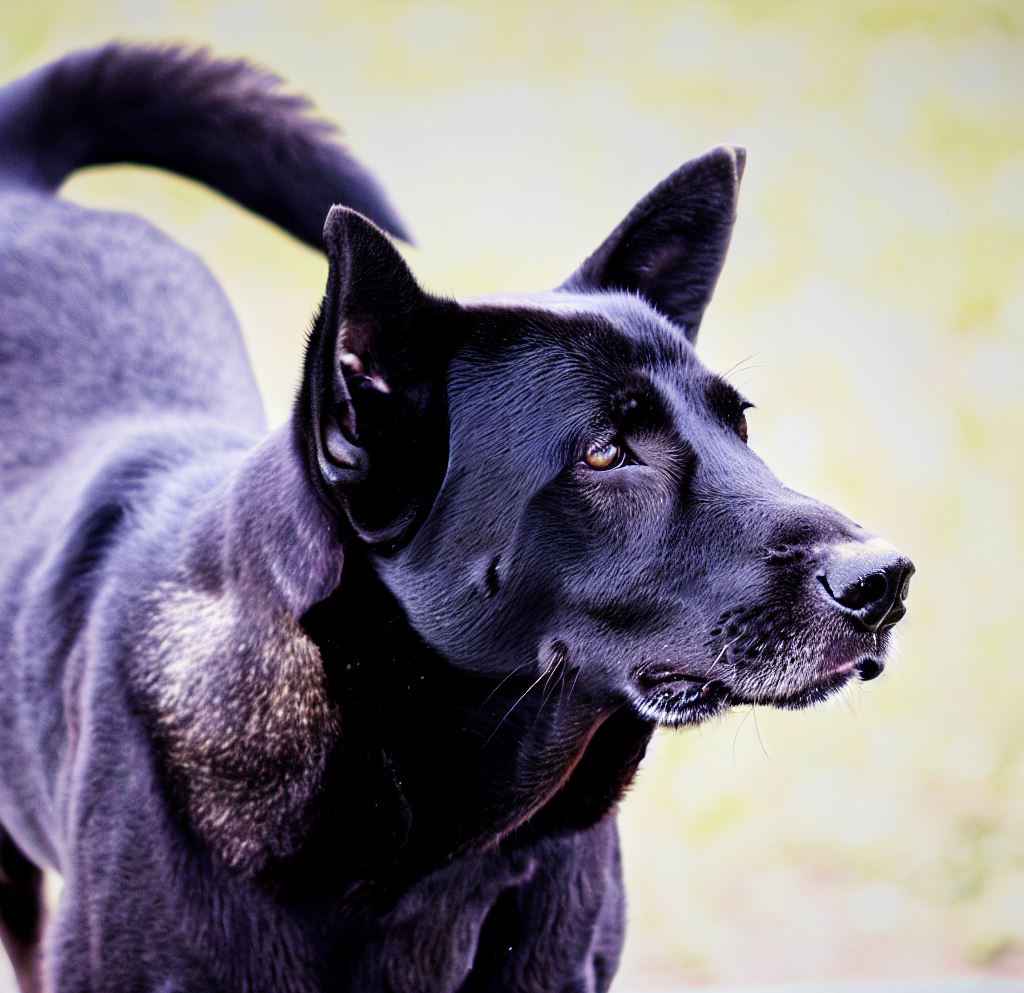Why Do My Dog Pant In The Car?
Answer to the question Why Does My Dog Pant In The Car? Dogs often pant during car journeys due to heat, dehydration, motion sickness, fear or excitement which is crucial for controlling their body temperature due to insufficient time and introduction to automobiles. Dogs often pant in the car due to a combination of physical and psychological factors. Car ride itself can be stressful for many dogs especially if they have not been exposed to it frequently or had negative experiences in the past. Anxiety and excitement can lead to increased panting as a way for them to cope with these emotions. Motion sickness is a common issue for dogs in cars.
The movement and unfamiliar sensations can make some dogs nauseous which leads to panting as a response to discomfort. The car environment can be hot especially in sunny weather or if the air conditioning is insufficient. Panting helps dogs regulate their body temperature so, they may pant more in an attempt to cool down. The anticipation plays a role. Dogs often associate car rides with exciting destinations like the park or the vet. This excitement can trigger panting as they eagerly await the adventure or conversely that feel nervous about an impending vet visit.
To alleviate your dog’s panting consider acclimating them to car rides gradually by ensuring proper ventilation, and consulting with a veterinarian if motion sickness appears to be the issue. Ultimately, understanding and addressing the root causes of your dog’s anxiety or discomfort in the car can help make the experience more enjoyable for both you and your furry friend.
How Do You Calm A Dog From Panting In The Car?
Make sure your dog is secure and comfortable by keeping them at a cool temperature by giving them fresh water often and taking care of any stress or discomfort they may feel from pain or motion sickness. This will help to reduce your dog’s panting while driving. Calm your panting dog in the car with these effective strategies:
Familiarization:
Gradually introduce your dog to the car by letting them explore it while parked. Make it a positive experience with treats, toys and praise.
Short Trips:
Start with short rides to pleasant destinations, like a nearby park, to create positive associations with car rides.
Comfortable Seating:
Use a comfortable, secure harness or a pet carrier to keep your dog safe during the journey. Familiar bedding can also provide comfort.
Routine:
Stick to a routine when traveling, including potty breaks and feeding times. This predictability can reduce anxiety.
Ventilation:
Ensure proper ventilation by cracking open windows slightly to maintain airflow. Avoid hot, stuffy conditions.
Calming Aids:
Consider natural calming aids like lavender oil or dog-specific pheromone sprays. Consult your vet about safe options.
Desensitization:
Gradually expose your dog to different sounds and movements associated with car rides, helping them become more accustomed to the sensations.
Medication:
In severe cases, consult your vet for anti-anxiety medication or motion sickness remedies.
Positive Reinforcement:
Praise and reward your dog for calm behavior during the ride. Treats and affection can help create positive associations.
Professional Help:
If your dog’s anxiety persists or consult a professional dog trainer or behaviorist for specialized guidance.
Remember that every dog is unique so, it may take some trial and error to discover the most effective methods for calming your dog in the car. Patience, consistency and a compassionate approach are key to helping your furry friend feel more at ease during car rides.
How Do I Know If My Dog Has Car Anxiety?
Common travel symptoms in dogs include unwillingness to enter the car, barking, whining, agitation and excessive salivation. Recognizing car anxiety in your dog involves observing their behavior and reactions before, during and after car rides. Here are key signs to look for:
Panting & Drooling:
Excessive panting and drooling are common indicators of anxiety in dogs, often occurring as soon as they enter the car.
Shaking or Trembling:
If your dog trembles or shakes in the car thus it is a clear sign of distress.
Whining or Vocalization:
Dogs with car anxiety may whine, bark or howl while in the car. This vocalization is often a plea for comfort or to be let out.
Pacing:
Restlessness and pacing in the car can signal nervousness and discomfort.
Vomiting or Nausea:
Frequent or persistent vomiting, drooling, or excessive lip licking during car rides could be signs of motion sickness or anxiety.
Avoidance Behavior:
If your dog hides or tries to escape from the car, it’s a strong indication of fear or anxiety.
Excessive Salivation:
Some dogs may salivate excessively when anxious, leading to wet spots on the car seat.
Refusal to Enter the Car:
If your dog flat-out refuses to get in the car but this is a clear sign of anxiety or negative associations.
Dilated Pupils:
Enlarged pupils can indicate stress or fear.
Behavior Changes After Rides:
If your dog displays unusual behavior changes like excessive lethargy or hyperactivity following a car ride so, it may be due to anxiety during the trip.
If you notice these signs consistently then your dog likely has car anxiety. To help them overcome it so, consider gradual desensitization, positive associations and consulting a professional dog trainer or behaviorist for guidance. Your dog’s well-being and comfort during car rides are important for their overall happiness and safety. You can also know about Why do dogs hyperventilate in the car?
Is Excessive Panting Bad For Dog?
No matter what breed your dog is excessive panting or rapid breathing might be a sign of an illness or injury requiring urgent veterinarian attention. Even while excessive panting in dogs is not always a harmful thing so, it should be taken carefully and further studied. The following are some causes of excessive dogs panting that may warrant concern:
Heatstroke:
If a dog is panting excessively in hot weather or after vigorous exercise but it may be struggling to regulate its body temperature which can lead to heatstroke if not addressed promptly.
Pain or Discomfort:
Pain, illness or injury can cause panting as a response to discomfort. Dogs may pant excessively if they are suffering from conditions like arthritis, digestive problems or injury.
Stress & Anxiety:
Dogs may pant when they are anxious or stressed. This can be triggered by various factors, including thunderstorms, car rides or separation anxiety.
Heart or Respiratory Issues:
Panting may indicate heart or respiratory issues, such as congestive heart failure or respiratory infections.
Medication Side Effects:
Monitoring your dog’s behavior when starting a new medication is crucial as some medications may cause excessive panting as a side effect.
Obesity:
Overweight dogs may pant more than usual because the excess weight puts additional strain on their bodies.
While panting is a normal way for dogs to cool down and manage stress but this is crucial to differentiate between normal, excessive or abnormal panting. If you notice your dog panting excessively, especially if it is accompanied by other concerning symptoms like vomiting, lethargy or disorientation. You should consult your veterinarian promptly. Identifying and addressing the underlying cause is essential for your dog’s health and well-being.
Where Do A Dog Sit In The Car?
Crumple zones in which cushion impact in the front and cargo areas and make the rear seat the safest location for your pet in a catastrophic accident that make it essential to restrain your pet there. Ensuring your dog’s safety and comfort in the car is essential and where your dog sits depends on various factors:
Back Seat:
The back seat is generally the safest place for your dog. You can use a dog-specific seat belt harness, a travel crate or a pet car seat to secure your dog in the back. This prevents them from moving around or becoming a distraction while you drive.
Dog Car Seat:
Dog car seats are designed to elevate your dog slightly by allowing them to see out the window while staying securely restrained. They usually attach to the back seat and come with harness attachments.
Travel Crate:
A travel crate provides a secure and confined space for your dog, reducing the risk of injury in case of sudden stops or accidents. Make sure the crate is appropriately sized and secured in the car.
Cargo Area:
If you have an SUV or a hatchback that you can use the cargo area. Use a barrier or crate to create a safe space for your dog by preventing them from moving into the passenger area.
Front Seat:
It is generally not recommended to allow your dog in the front seat especially if the car has airbags. Airbags can be dangerous for dogs in the event of a crash.
Trunk:
Never allow your dog to ride in the trunk as it lacks proper ventilation and is unsafe.
Remember to secure your dog appropriately to prevent injury and distraction while driving. The choice of seating also depends on your dog’s size, temperament and any specific needs they may have during car rides. Always prioritize their safety and well-being when traveling with them.
Facts & Features Of Dogs:
Dogs are fascinating and diverse creatures and here are some key facts and features that make them unique:
- There are over 340 different dog breeds worldwide each with its own characteristics, appearance and temperament.
- This diversity results from centuries of selective breeding for specific purposes such as herding, hunting or companionship.
- Dogs are inherently social animals, forming strong bonds with their human companions and often other dogs.
- This social nature makes them excellent companions and loyal family members.
- Dogs come in a wide range of sizes from tiny teacup breeds to giant breeds like the Great Dane.
- Their size influences their exercise needs for living space requirements and potential health issues.
- Dogs have an exceptional sense of smell which allows them to detect scents and even medical conditions like seizures or certain cancers.
- Their hearing is also acute far surpassing human capabilities.
- Dogs exhibit a wide range of intelligence levels across breeds.
- Some like Border Collies are highly intelligent and excel in tasks like obedience and agility while others may have different strengths.
- Dog lifespan is influenced by breed, size or genetics with smaller breeds having longer lifespans.
- Dogs experience emotions like joy, fear, sadness and empathy.
- They can read human emotions by making them excellent therapy and support animals.
- Dogs communicate through body language, barking and vocalizations.
- Understanding their cues, such as tail wagging that can help you better interact with them.
- Dogs are domesticated for thousands of years so are known for their adaptability and ability to thrive in diverse environments worldwide, requiring proper nutrition, exercise, and veterinary care for their health and well-being.
- They are loyal companions, working partners or beloved members of households for making them one of the most cherished and diverse species on Earth.




The arguments in this article were very well-presented. I appreciate the depth of analysis. It would be interesting to hear how others interpret these points. What do you think?
Great article! The clarity and depth of your explanation are commendable.